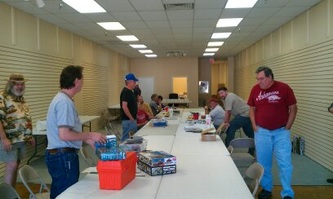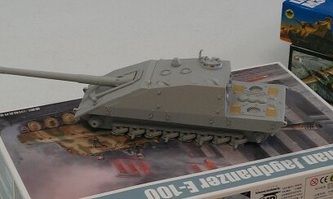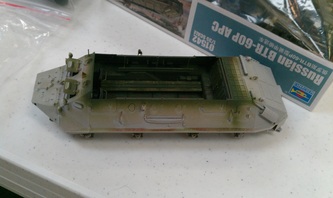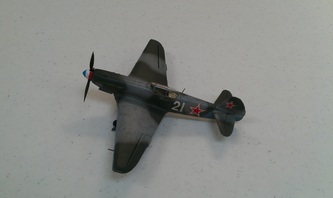CASM Meeting Minutes - October 2011
Date: 10/8/11
Present: Brent Bristow, Tom Brown, Cliff Bullock, Brianna Childres, Ken Childres, Kenneth Fausett, Lloyd King, Dakota Leker, Ron Leker, Daris Long, Sam Macheak, Mac Miller, Conrad Schalchin, Ray Smith, David Stilwell, David Wassell, Steve Wilson
The meeting was called to order by President Ken Childres at 10:15 A.M.
Announcements:
Upcoming Events
10/15/11 Region 6 ConAir 2011, Kansas Aviation Museum, 3350 South George Washington Blvd., Wichita, Kansas; 10/22/11 AMPS Centrex South Region Show, Norris Conference Centers, Austin, Texas, 11/5/11 TigerCon Columbia, Mo; 11/5/11 Lafayette, LA.
10/15/11, Plastic Model Swapmeet, 10:00 – 5:00, Burns Park, North Little Rock, Elder Johnson Pavilion, Free Hotdogs, Door Prize Drawings, for more info call Ken @ 501-681-9954.
Group Build
The Made for the Movies group build is next month.
Hobbytown USA Card Drawing:
Rusty Nail: $5.00; Conrad Schalchin: $10.00; ?: $15.00
Contest Post-Mortem
By the numbers: There were 47 entrants who entered 140 models. The club spent approximately $1300 for the contest with an income of $1380 from the contest. The CASM treasury account currently has approximately $1400. Steve Wilson compared this to past shows where there was an average of 52 entrants with 200 models.
Vender and outside observer feedback: The venders reported that they had good days, sold many items, and were impressed by the advertising for the show. Randy Barnes from the USS Lexington Museum reported that he was impressed by how well organized the show was and the high quality of the models entered. Venders also reported that they liked their location in the contest because they could see most of the models. Employees from Game Zone Alpha were very impressed by the organization, efficiency, and judging of the show.
Judging: There were numerous positive comments about the fairness and accuracy of the judging. Generally speaking, the most outstanding models received Gold medals; really good models received Silver medals; and models with minor flaws received Bronze medals. The “Best of” awards seemed to go to the best models and the highest proportion of the awards went to entrants who were not from the club which exemplified the fairness of the judging. People who judged reported that they liked the judging system and found it to be very intuitive in its use. The color coding of the entries facilitated judging the specialty awards. The outcome of the judging was consistent with what one would expect in that there were more Bronze medals awarded than Silver medals and more Silver medals awarded than Gold medals. Most agreed that the open system of judging encourages modelers from all skill levels to enter a contest and serves to provide a benchmark of a person’s modeling skills. One entrant left the show angry after being awarded three Bronze medals which is an example of the harsh reality of the open system. Sometimes we think our modeling abilities are better than what the Open judges think and the Bronze medal is not considered to be an award that one should rejoice about. In truth, receiving any of the awards should be considered what it is: an award. There were some entrants who did not receive an award at all because the quality of their model did not reach the standard necessary for a medal. People who are used to the 1-2-3 method sometimes have difficulty adjusting to the Open system of judging and would rather go home with nothing than a Bronze medal. Two genres of modeling did not fit well with the judging criteria. Some figure models, like the busts for example, require very little construction but emphasize the finish of the model and paper models emphasize the construction and less the finish. The current judging criteria do not match the genres well which could lead to inflated scores. The judging criteria for these genres will be evaluated and changes will be made where necessary for the contest next year. A further refinement in judging organization for next year could be in reducing the number of category head judges and forming three judging teams; two of which would cover the most entered categories of aircraft and armor and the third team would do the rest. This configuration would facilitate the judging process and maximize manpower.
Venue: The Game Zone Alpha venue provided a large space that was well-lighted. The employees at Game Zone Alpha were very supportive and accommodating of the contest. They were very nice to work with and made it easy for the contest to run smoothly. The management of Game Zone Alpha was difficult to coordinate with during the year leading up to the contest and made stipulations about the use of the space that were contrary to previous discussions the night before the contest which caused alterations in planning. These difficulties were eventually overcome thanks to the store employees. It was agreed that a different venue would be sought for future shows.
Risers: Most people liked the use of the risers and found them to be beneficial for viewing and judging the models for the adults of the show as well as sufficient security measure to ward off touching by children. They also made viewing of the models difficult for children. It was agreed to use risers in future shows but to put Junior models on lowered tables and adult models on the raised tables.
DemonstrationNo demonstration this month. Steve Wilson will present a discussion on how to write captions at the next meeting.
Show-N-Tell
Sam Macheak presented a 1/72nd scale Special Hobby/AMT NKC-135 Aria Instrumentation.
Ron Leker presented a Trumpeter German Jagdpanzer E-100 WIP and the beginning of the REvell of Germany Class 214 U-Boat that he is using to make a Sci-fi Kit bash. He plans on naming his project the “Daris Long”.
Ken Childres presented his WIP BTR 60 P APC and New World Miniatures Israeli Officer.
Cliff Bullock presented a Tamiya JSU-125 and ICM Yak 9DD.
Daris Long presented information regarding the paint colors of the USS Arizona.
Brent Bristow presented a “My Favorite Martian” WIP and a Star Trek Klingon D-7.
The meeting was adjourned at 11:30 PM
Present: Brent Bristow, Tom Brown, Cliff Bullock, Brianna Childres, Ken Childres, Kenneth Fausett, Lloyd King, Dakota Leker, Ron Leker, Daris Long, Sam Macheak, Mac Miller, Conrad Schalchin, Ray Smith, David Stilwell, David Wassell, Steve Wilson
The meeting was called to order by President Ken Childres at 10:15 A.M.
Announcements:
Upcoming Events
10/15/11 Region 6 ConAir 2011, Kansas Aviation Museum, 3350 South George Washington Blvd., Wichita, Kansas; 10/22/11 AMPS Centrex South Region Show, Norris Conference Centers, Austin, Texas, 11/5/11 TigerCon Columbia, Mo; 11/5/11 Lafayette, LA.
10/15/11, Plastic Model Swapmeet, 10:00 – 5:00, Burns Park, North Little Rock, Elder Johnson Pavilion, Free Hotdogs, Door Prize Drawings, for more info call Ken @ 501-681-9954.
Group Build
The Made for the Movies group build is next month.
Hobbytown USA Card Drawing:
Rusty Nail: $5.00; Conrad Schalchin: $10.00; ?: $15.00
Contest Post-Mortem
By the numbers: There were 47 entrants who entered 140 models. The club spent approximately $1300 for the contest with an income of $1380 from the contest. The CASM treasury account currently has approximately $1400. Steve Wilson compared this to past shows where there was an average of 52 entrants with 200 models.
Vender and outside observer feedback: The venders reported that they had good days, sold many items, and were impressed by the advertising for the show. Randy Barnes from the USS Lexington Museum reported that he was impressed by how well organized the show was and the high quality of the models entered. Venders also reported that they liked their location in the contest because they could see most of the models. Employees from Game Zone Alpha were very impressed by the organization, efficiency, and judging of the show.
Judging: There were numerous positive comments about the fairness and accuracy of the judging. Generally speaking, the most outstanding models received Gold medals; really good models received Silver medals; and models with minor flaws received Bronze medals. The “Best of” awards seemed to go to the best models and the highest proportion of the awards went to entrants who were not from the club which exemplified the fairness of the judging. People who judged reported that they liked the judging system and found it to be very intuitive in its use. The color coding of the entries facilitated judging the specialty awards. The outcome of the judging was consistent with what one would expect in that there were more Bronze medals awarded than Silver medals and more Silver medals awarded than Gold medals. Most agreed that the open system of judging encourages modelers from all skill levels to enter a contest and serves to provide a benchmark of a person’s modeling skills. One entrant left the show angry after being awarded three Bronze medals which is an example of the harsh reality of the open system. Sometimes we think our modeling abilities are better than what the Open judges think and the Bronze medal is not considered to be an award that one should rejoice about. In truth, receiving any of the awards should be considered what it is: an award. There were some entrants who did not receive an award at all because the quality of their model did not reach the standard necessary for a medal. People who are used to the 1-2-3 method sometimes have difficulty adjusting to the Open system of judging and would rather go home with nothing than a Bronze medal. Two genres of modeling did not fit well with the judging criteria. Some figure models, like the busts for example, require very little construction but emphasize the finish of the model and paper models emphasize the construction and less the finish. The current judging criteria do not match the genres well which could lead to inflated scores. The judging criteria for these genres will be evaluated and changes will be made where necessary for the contest next year. A further refinement in judging organization for next year could be in reducing the number of category head judges and forming three judging teams; two of which would cover the most entered categories of aircraft and armor and the third team would do the rest. This configuration would facilitate the judging process and maximize manpower.
Venue: The Game Zone Alpha venue provided a large space that was well-lighted. The employees at Game Zone Alpha were very supportive and accommodating of the contest. They were very nice to work with and made it easy for the contest to run smoothly. The management of Game Zone Alpha was difficult to coordinate with during the year leading up to the contest and made stipulations about the use of the space that were contrary to previous discussions the night before the contest which caused alterations in planning. These difficulties were eventually overcome thanks to the store employees. It was agreed that a different venue would be sought for future shows.
Risers: Most people liked the use of the risers and found them to be beneficial for viewing and judging the models for the adults of the show as well as sufficient security measure to ward off touching by children. They also made viewing of the models difficult for children. It was agreed to use risers in future shows but to put Junior models on lowered tables and adult models on the raised tables.
DemonstrationNo demonstration this month. Steve Wilson will present a discussion on how to write captions at the next meeting.
Show-N-Tell
Sam Macheak presented a 1/72nd scale Special Hobby/AMT NKC-135 Aria Instrumentation.
Ron Leker presented a Trumpeter German Jagdpanzer E-100 WIP and the beginning of the REvell of Germany Class 214 U-Boat that he is using to make a Sci-fi Kit bash. He plans on naming his project the “Daris Long”.
Ken Childres presented his WIP BTR 60 P APC and New World Miniatures Israeli Officer.
Cliff Bullock presented a Tamiya JSU-125 and ICM Yak 9DD.
Daris Long presented information regarding the paint colors of the USS Arizona.
Brent Bristow presented a “My Favorite Martian” WIP and a Star Trek Klingon D-7.
The meeting was adjourned at 11:30 PM















